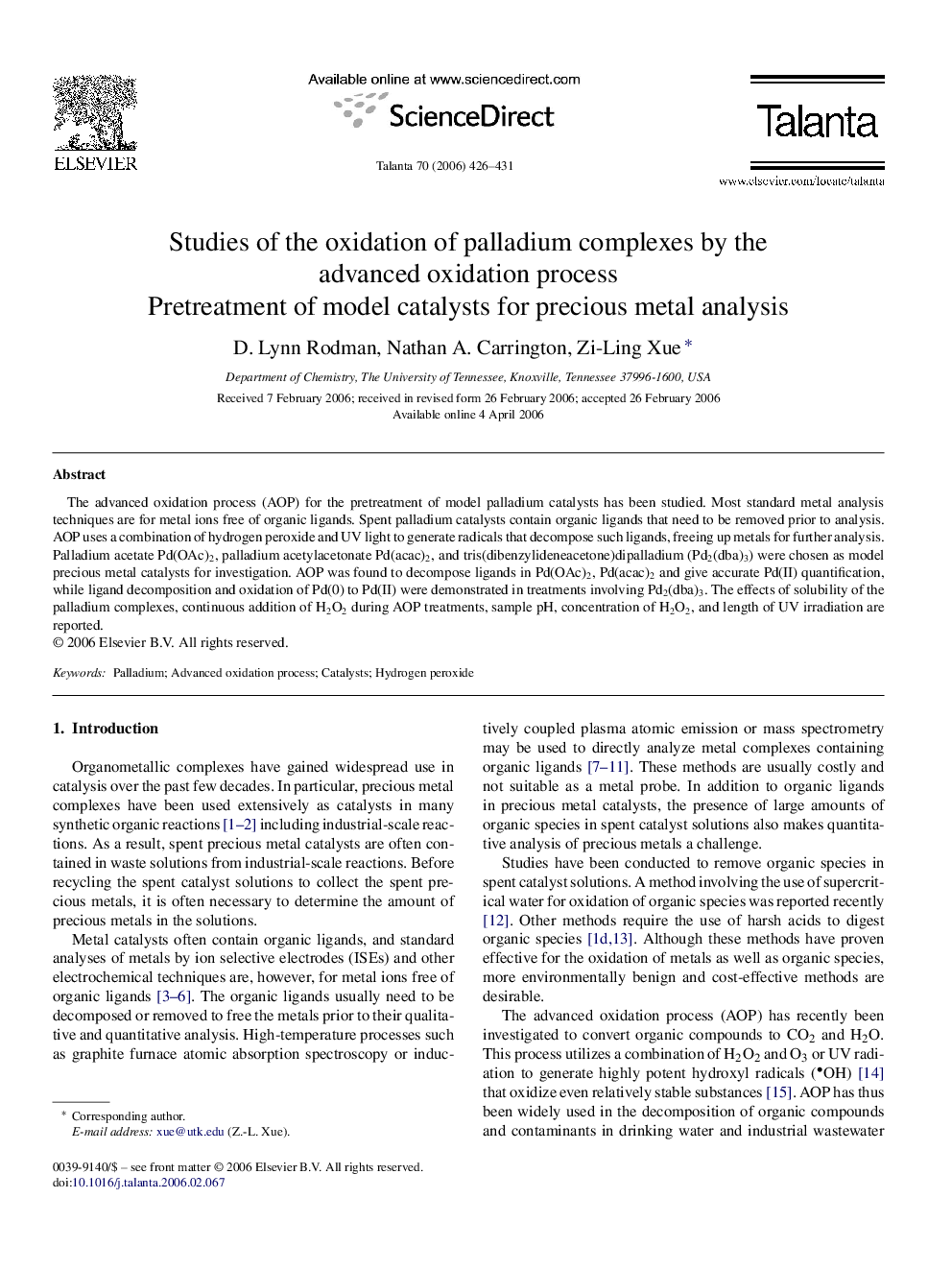| Article ID | Journal | Published Year | Pages | File Type |
|---|---|---|---|---|
| 1246475 | Talanta | 2006 | 6 Pages |
Abstract
The advanced oxidation process (AOP) for the pretreatment of model palladium catalysts has been studied. Most standard metal analysis techniques are for metal ions free of organic ligands. Spent palladium catalysts contain organic ligands that need to be removed prior to analysis. AOP uses a combination of hydrogen peroxide and UV light to generate radicals that decompose such ligands, freeing up metals for further analysis. Palladium acetate Pd(OAc)2, palladium acetylacetonate Pd(acac)2, and tris(dibenzylideneacetone)dipalladium (Pd2(dba)3) were chosen as model precious metal catalysts for investigation. AOP was found to decompose ligands in Pd(OAc)2, Pd(acac)2 and give accurate Pd(II) quantification, while ligand decomposition and oxidation of Pd(0) to Pd(II) were demonstrated in treatments involving Pd2(dba)3. The effects of solubility of the palladium complexes, continuous addition of H2O2 during AOP treatments, sample pH, concentration of H2O2, and length of UV irradiation are reported.
Related Topics
Physical Sciences and Engineering
Chemistry
Analytical Chemistry
Authors
D. Lynn Rodman, Nathan A. Carrington, Zi-Ling Xue,
